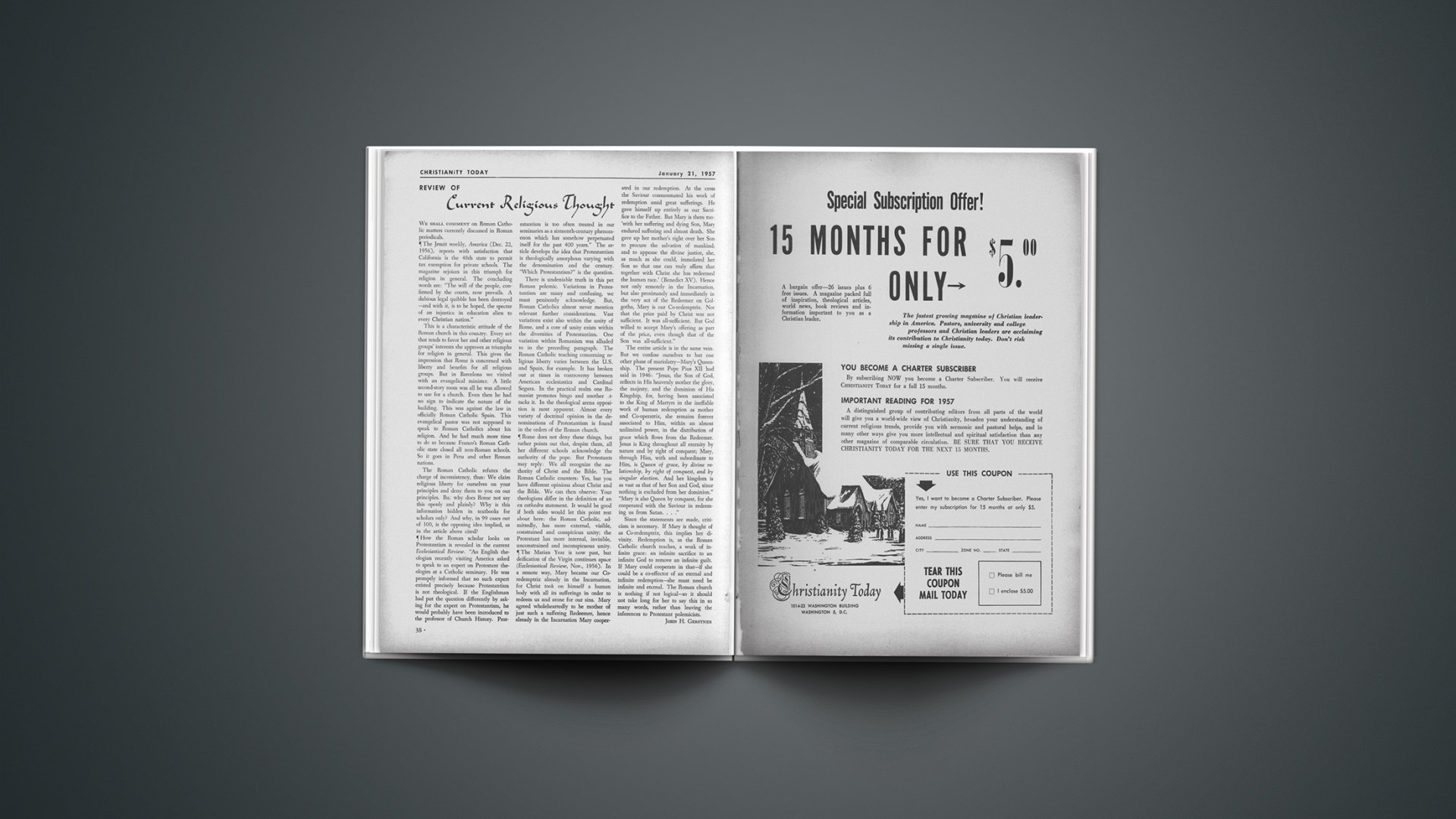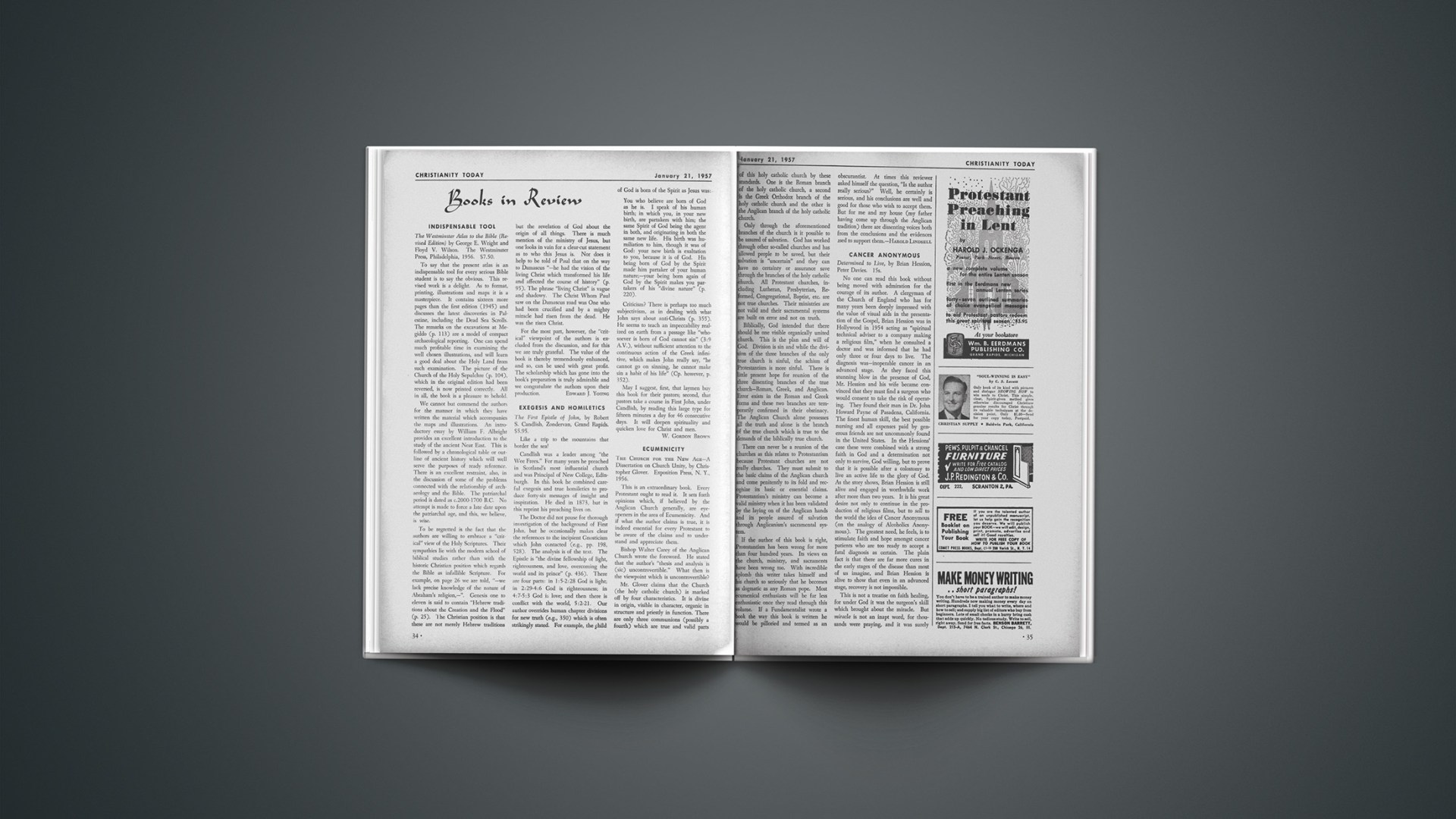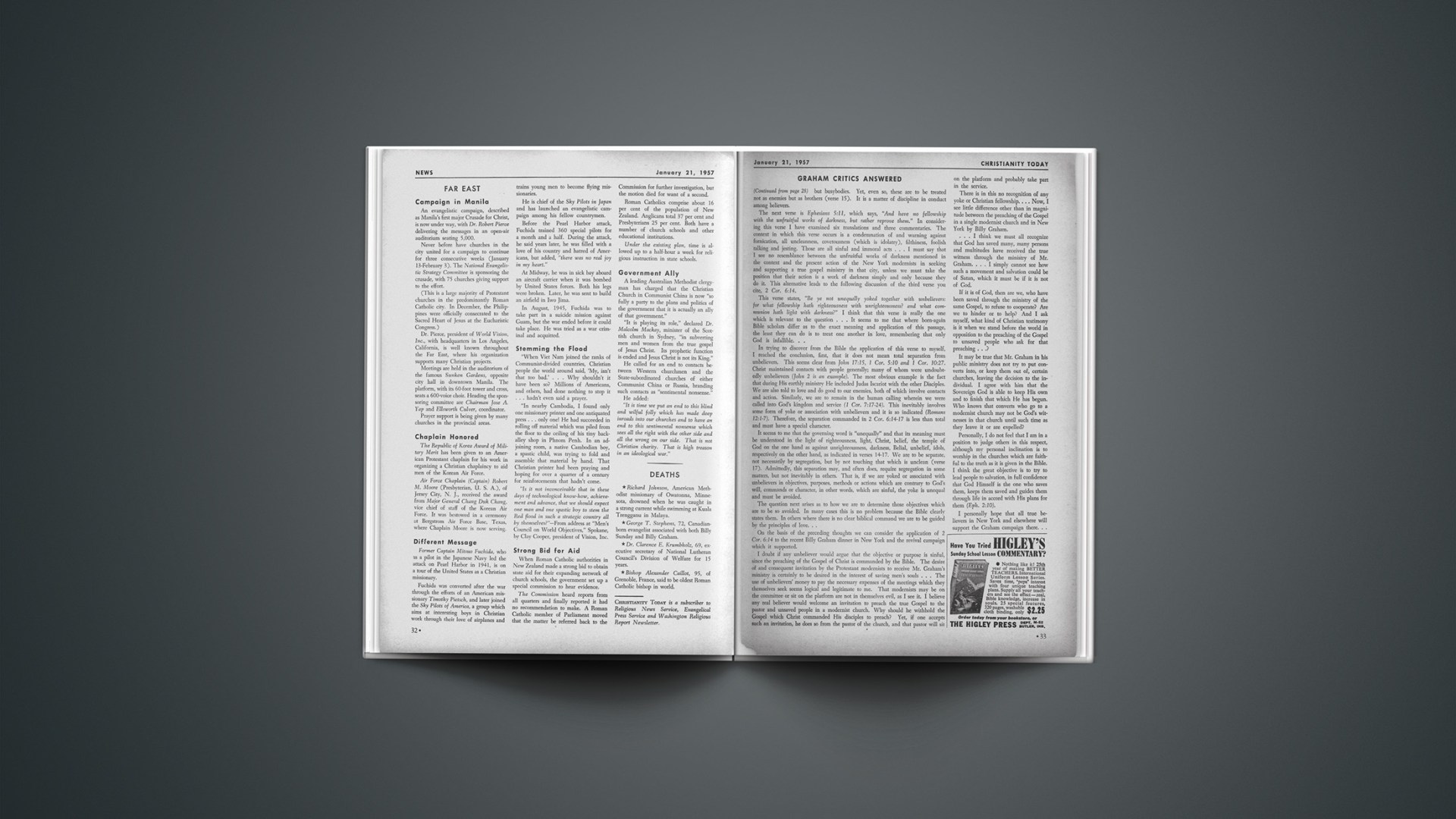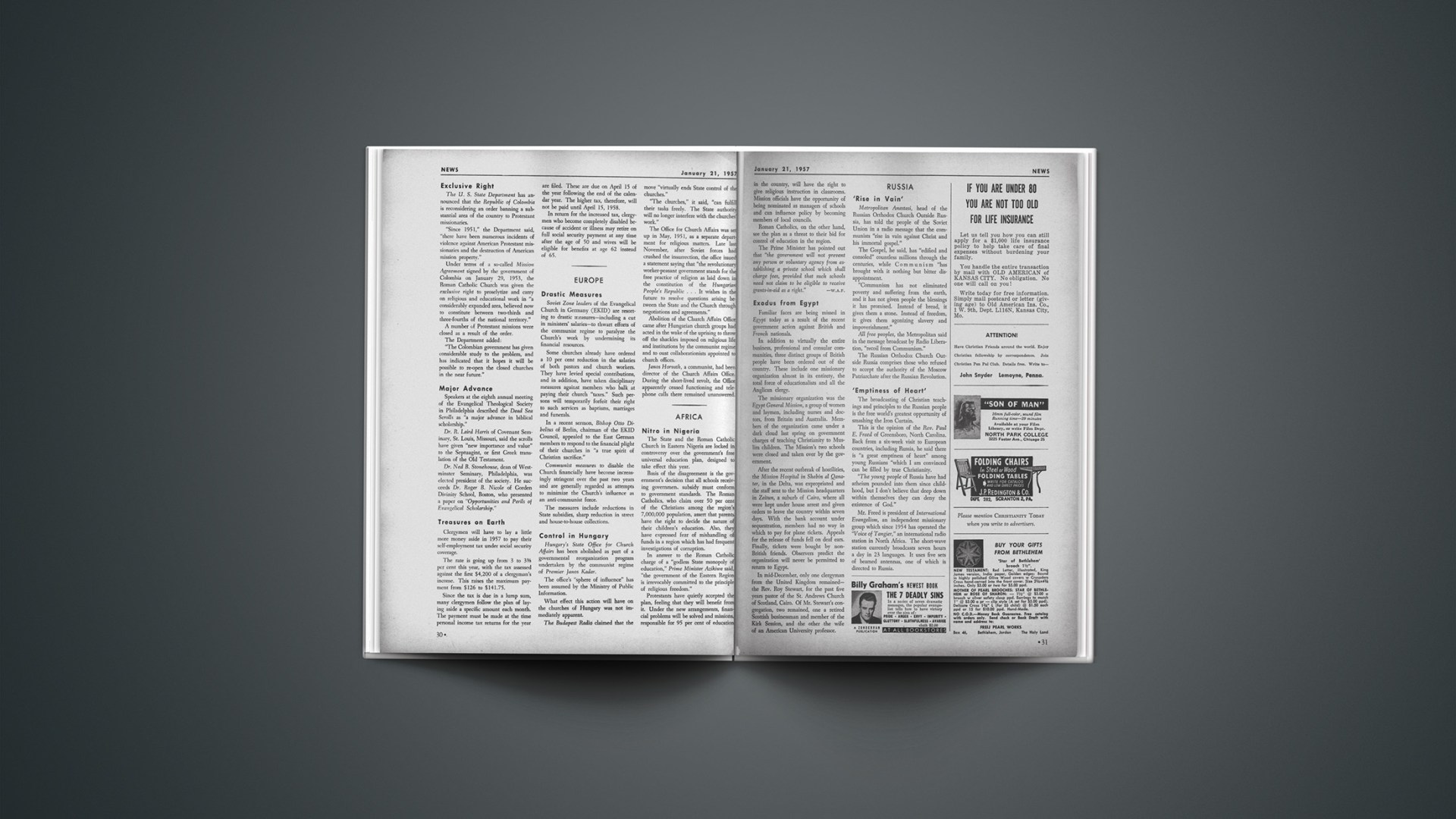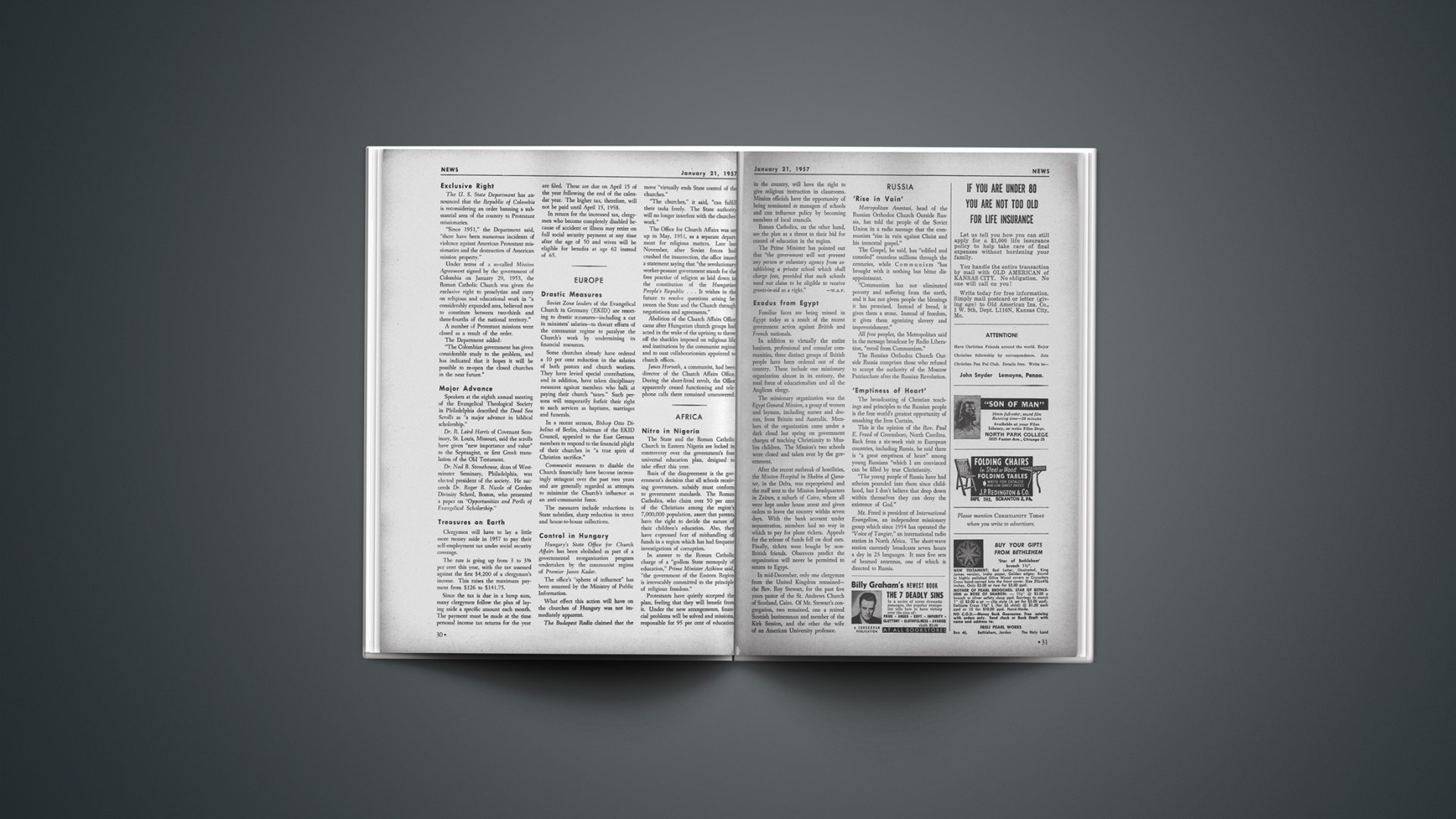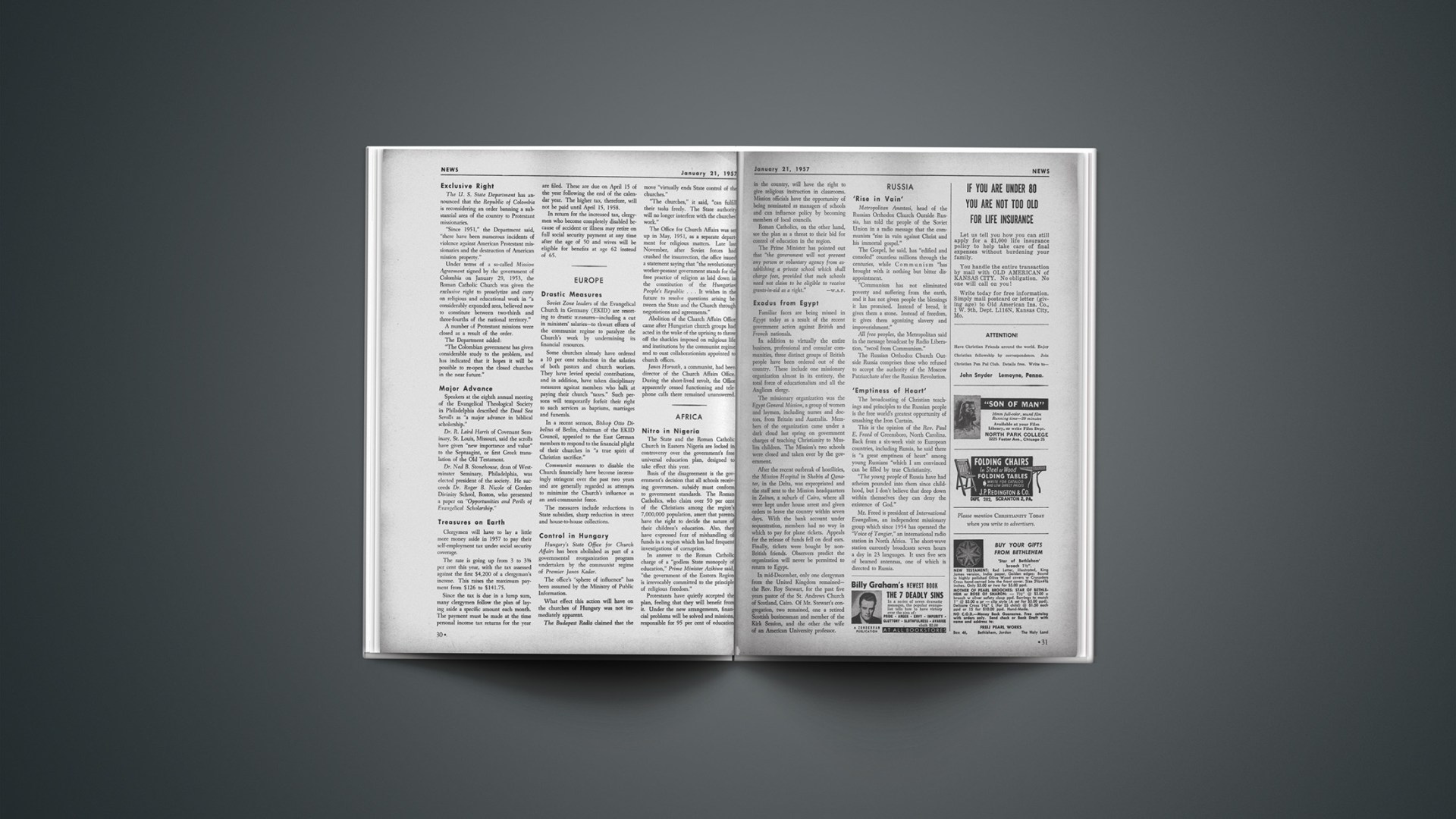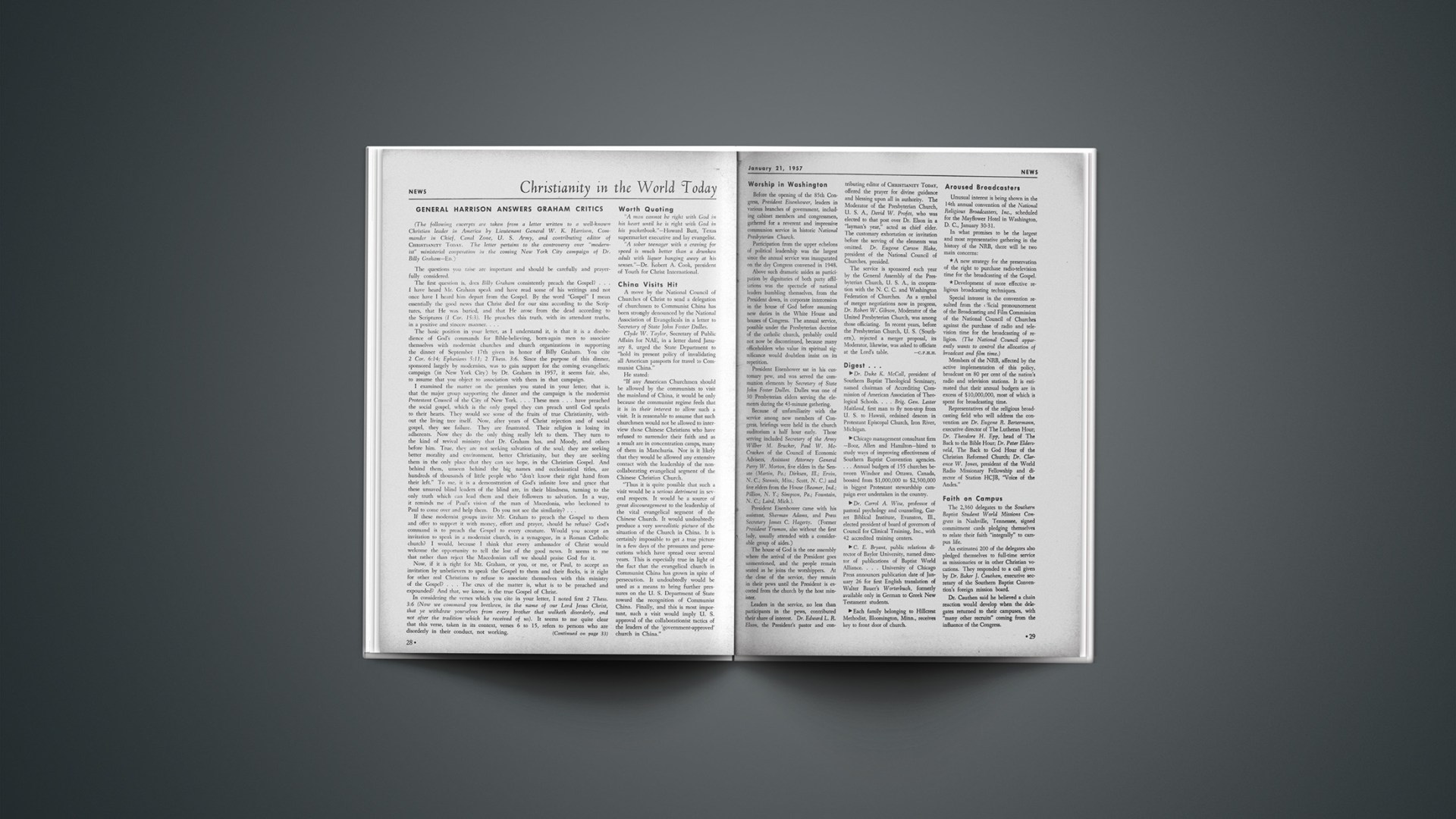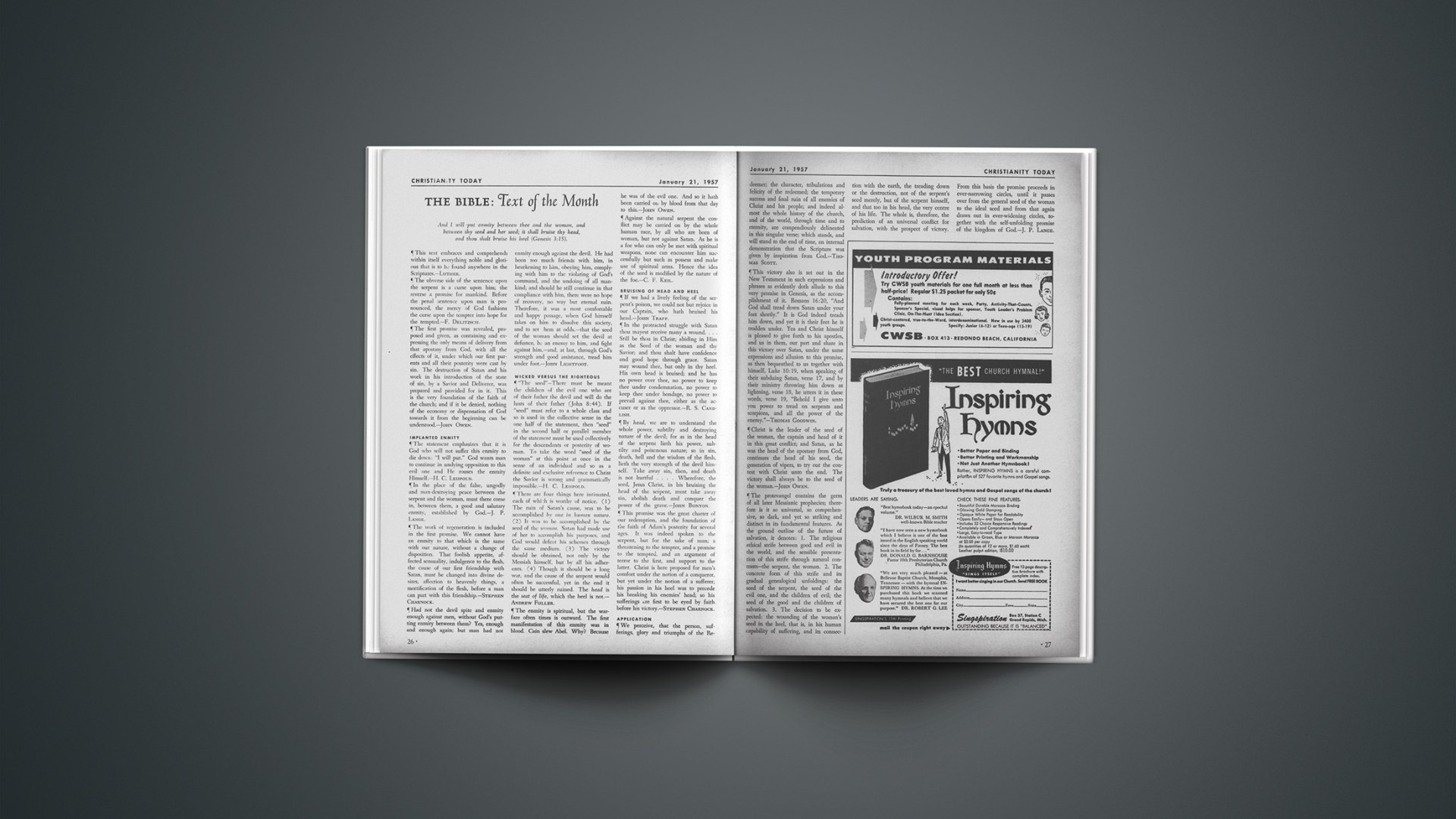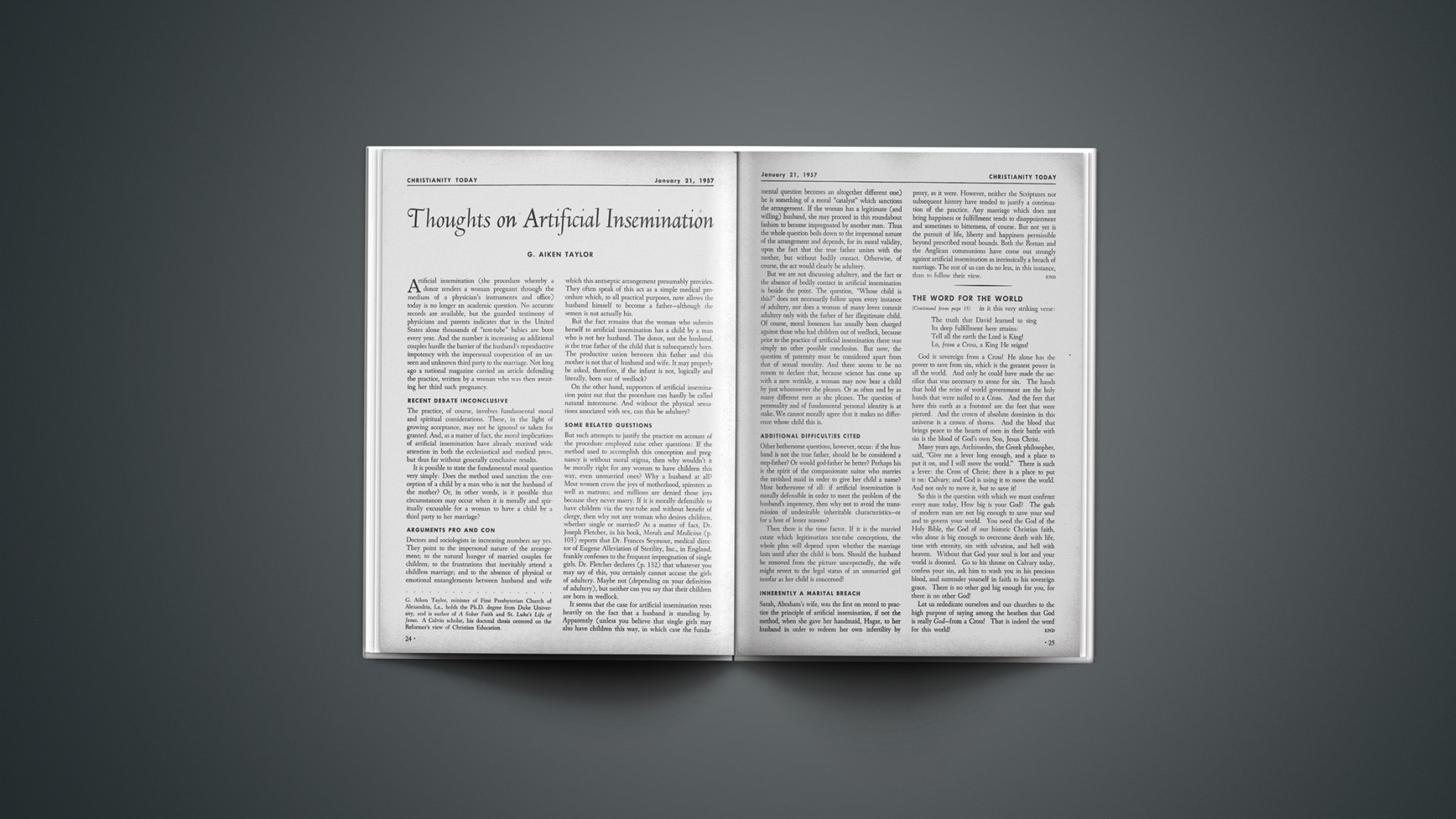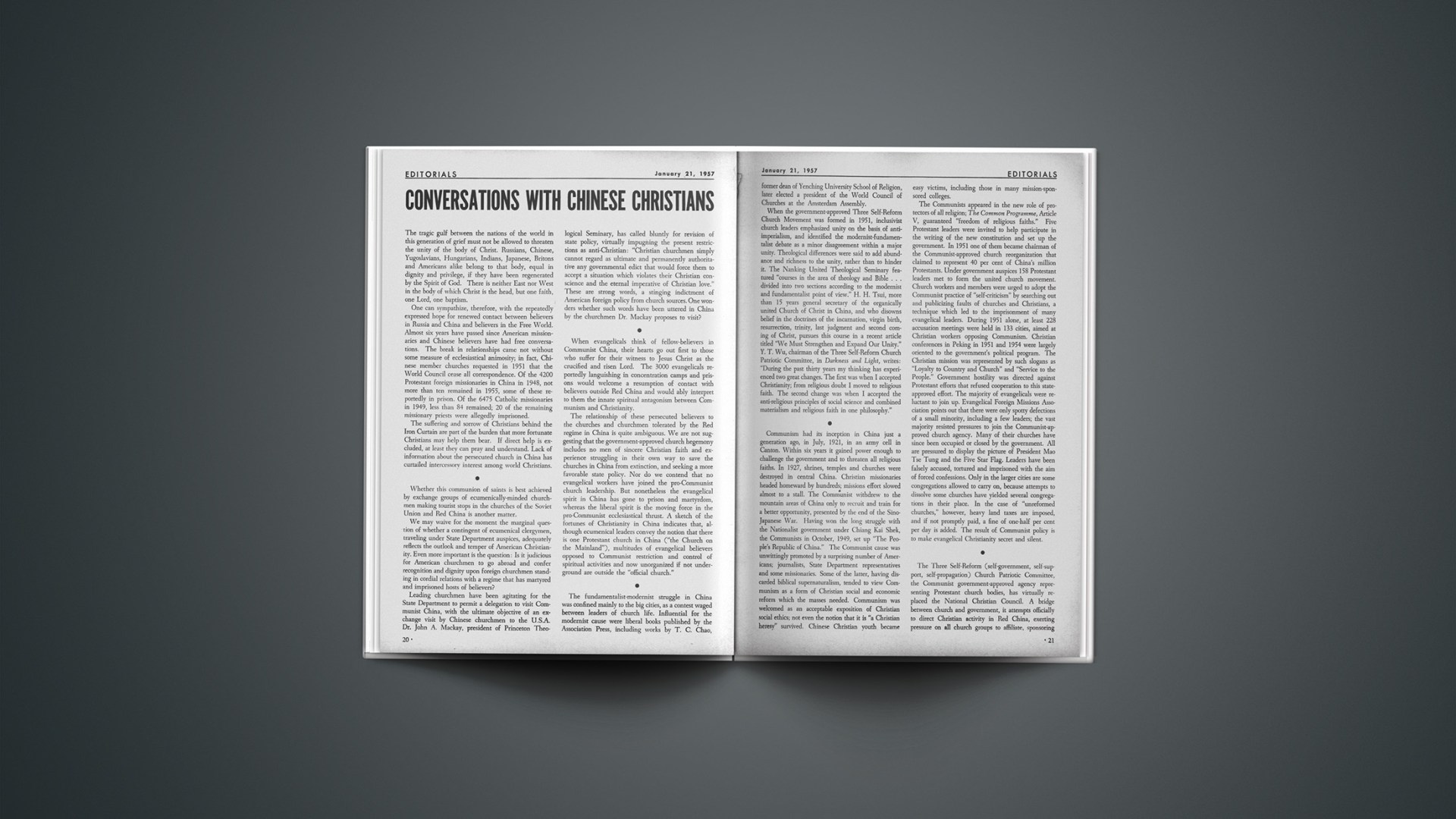We shall comment on Roman Catholic matters currently discussed in Roman periodicals.
The Jesuit weekly, America (Dec. 22, 1956), reports with satisfaction that California is the 48th state to permit tax exemption for private schools. The magazine rejoices in this triumph for religion in general. The concluding words are: “The will of the people, confirmed by the courts, now prevails. A dubious legal quibble has been destroyed—and with it, is to be hoped, the spectre of an injustice in education alien to every Christian nation.”
This is a characteristic attitude of the Roman church in this country. Every act that tends to favor her and other religious groups’ interests she approves as triumphs for religion in general. This gives the impression that Rome is concerned with liberty and benefits for all religious groups. But in Barcelona we visited with an evangelical minister. A little second-story room was all he was allowed to use for a church. Even then he had no sign to indicate the nature of the building. This was against the law in officially Roman Catholic Spain. This evangelical pastor was not supposed to speak to Roman Catholics about his religion. And he had much more time to do so because Franco’s Roman Catholic state closed all non-Roman schools. So it goes in Peru and other Roman nations.
The Roman Catholic refutes the charge of inconsistency, thus: We claim religious liberty for ourselves on your principles and deny them to you on our principles. But why does Rome not say this openly and plainly? Why is this information hidden in textbooks for scholars only? And why, in 99 cases out of 100, is the opposing idea implied, as in the article above cited?
How the Roman scholar looks on Protestantism is revealed in the current Ecclesiastical Review. “An English theologian recently visiting America asked to speak to an expert on Protestant theologies at a Catholic seminary. He was promptly informed that no such expert existed precisely because Protestantism is not theological. If the Englishman had put the question differently by asking for the expert on Protestantism, he would probably have been introduced to the professor of Church History. Protestantism is too often treated in our seminaries as a sixteenth-century phenomenon which has somehow perpetuated itself for the past 400 years.” The article develops the idea that Protestantism is theologically amorphous varying with the denomination and the century. “Which Protestantism?” is the question.
There is undeniable truth in this pet Roman polemic. Variations in Protestantism are many and confusing, we must penitently acknowledge. But, Roman Catholics almost never mention relevant further considerations. Vast variations exist also within the unity of Rome, and a core of unity exists within the diversities of Protestantism. One variation within Romanism was alluded to in the preceding paragraph. The Roman Catholic teaching concerning religious liberty varies between the U.S. and Spain, for example. It has broken out at times in controversy between American ecclesiastics and Cardinal Segura. In the practical realm one Romanist promotes bingo and another attacks it. In the theological arena opposition is most apparent. Almost every variety of doctrinal opinion in the denominations of Protestantism is found in the orders of the Roman church.
Rome does not deny these things, but rather points out that, despite them, all her different schools acknowledge the authority of the pope. But Protestants may reply: We all recognize the authority of Christ and the Bible. The Roman Catholic counters: Yes, but you have different opinions about Christ and the Bible. We can then observe: Your theologians differ in the definition of an ex cathedra statement. It would be good if both sides would let this point rest about here: the Roman Catholic, admittedly, has more external, visible, constrained and conspicious unity; the Protestant has more internal, invisible, unconstrained and inconspicuous unity.
The Marian Year is now past, but deification of the Virgin continues apace (Ecclesiastical Review, Nov., 1956). In a remote way, Mary became our Co-redemptrix already in the Incarnation, for Christ took on himself a human body with all its sufferings in order to redeem us and atone for our sins. Mary agreed wholeheartedly to be mother of just such a suffering Redeemer, hence already in the Incarnation Mary cooperated in our redemption. At the cross the Saviour consummated his work of redemption amid great sufferings. He gave himself up entirely as our Sacrifice to the Father. But Mary is there too: ‘with her suffering and dying Son, Mary endured suffering and almost death. She gave up her mother’s right over her Son to procure the salvation of mankind; and to appease the divine justice, she, as much as she could, immolated her Son so that one can truly affirm that together with Christ she has redeemed the human race.’ (Benedict XV). Hence not only remotely in the Incarnation, but also proximately and immediately in the very act of the Redeemer on Golgotha, Mary is our Co-redemptrix. Not that the price paid by Christ was not sufficient. It was all-sufficient. But God willed to accept Mary’s offering as part of the price, even though that of the Son was all-sufficient.”
The entire article is in the same vein. But we confine ourselves to but one other phase of mariolatry—Mary’s Queen-ship. The present Pope Pius XII had said in 1946: “Jesus, the Son of God, reflects in His heavenly mother the glory, the majesty, and the dominion of His Kingship, for, having been associated to the King of Martyrs in the ineffable work of human redemption as mother and Co-operatrix, she remains forever associated to Him, within an almost unlimited power, in the distribution of grace which flows from the Redeemer. Jesus is King throughout all eternity by nature and by right of conquest; Mary, through Him, with and subordinate to Him, is Queen of grace, by divine relationship, by right of conquest, and by singular election. And her kingdom is as vast as that of her Son and God, since nothing is excluded from her dominion.” “Mary is also Queen by conquest, for she cooperated with the Saviour in redeeming us from Satan.…”
Since the statements are made, criticism is necessary. If Mary is thought of as Co-redemptrix, this implies her divinity. Redemption is, as the Roman Catholic church teaches, a work of infinite grace: an infinite sacrifice to an infinite God to remove an infinite guilt. If Mary could cooperate in that—if she could be a co-effector of an eternal and infinite redemption—she must need be infinite and eternal. The Roman church is nothing if not logical—so it should not take long for her to say this in so many words, rather than leaving the inferences to Protestant polemicists.

